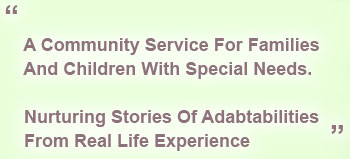PART I: INTRODUCTION
Understanding Heartfelt Conversations
| Part I Documents |
Part I Forms & Handouts (PDF)
|
||
Much of communication is nonverbal and begins in the heart. The first meeting with our client-family is the crux of our assessment process, and all things we might do to help in the future are dependent on how we first come together and communicate. What we say is tempered by how we greet each other, and how we engage in reciprocal moves of eyes, face, tone of voice and gestures.
We believe we’ve captured the dozen or so elements essential in getting communication started with client-families. These simple ideas are a part of our training, and yet they often elude the best of us. Conversation is taken for granted, but it is difficult to say the right thing and to include all needed elements in what is said. Unless we do this well, we will hardly get anywhere in learning our family’s goals. The family must perceive our communication to be based on unconditional regard and genuineness. Likewise we are mindful of the contrasts between cultures and different lifeways and seek different skills and attitudes as well as knowledge of ways of talking and relating while we remain aware of our beliefs and values which might develop into prejudices and ethnocentrisms.
Likely, we will need to learn first about what is going well with the family before becoming too immersed in their unresolved problems. Certainly though, we need to accommodate a parent’s notion of when it is appropriate to bring up their concerns. In this assessment process, we have many ways of finding out what already works well for the family.
It is important for us to learn what we need to do as helpers for the family. This is the first step in building resiliency in clients.
| [Back to Top] |








Social Networks
Follow Us